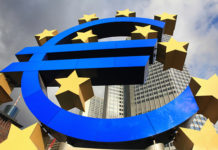Markets
EUR/USD is a highly frequented chart these days. With yesterday’s slide at the start of the week, the pair was less than a whisker away from parity. The decline extended in Asian and most of European dealings, leading EUR/USD to hit 1.00 exactly at 11:46 am according to the Bloomberg terminals. This 20-year low was immediately followed by some technical return action higher, suggesting it serves as a strong psychological barrier to break. At the time of writing, EUR/USD is changing hands in the 1.005 area. We fear it’s only a matter of time before a break occurs. If not today, then perhaps tomorrow with the release of US CPI that may bring back the focus to the Fed and its aggressive tightening campaign. We suspect a lot of stop-losses will be triggered in case EUR/USD goes sub 1, causing the downleg to accelerate. The test of parity happened against the same background as yesterday, i.e. risk aversion. This was visible in other currency crosses as well with the Japanese yen outperforming peers. USD/JPY is taking a step back to 136.79, EUR/JPY extends a series of declines to 137.34. Unlike yesterday, sterling is trading a bit more in the defense. EUR/GBP (0.846) recoups part of Monday’s losses but still falls way short of returning to the upward sloping trend channel. Fallout on equity markets stayed limited today. The EuroStoxx50 erased losses of as much as 1.3% to trade flat currently. US markets open with minor gains (up to 0.8% in the Nasdaq). Core bonds surged. German Bunds continue to outperform US Treasuries. German yields/European swap yields drop between 8/9 bps at the front end and 15+ bps at the long(est) tenors. Germany’s 10y yield is testing the critical 1.12%/1.15% support level. The European 10y swap yield (-13bps) is struggling and currently failing to retain the 2% barrier. US bond yields shed 7.2 bps (2y) to 8.8 bps (20y) in a bull flattener. Testament to recessionary risk aversion is a further decline in the likes of oil, even as OPEC’s first 2023 outlook shows no relief in the oil market squeeze. A barrel of Brent eases almost $5 to $102.2. The limited batch of data available today told the same story. Germany’s ZEW dropped way more than expected with the current situation gauge falling from -27.6 to -45.8. Expectations fell off a cliff, from -28 to -53.8 (-40.5 expected), the lowest since the sovereign debt crisis in 2011.
News Headlines
The National Bank of Poland (NBP) in its July economic forecasts again revised the central path for inflation sharply higher from the March forecast. The NBP now expects 2022 inflation at 14.2% (from 10.8% in March) and at 12.3% next year (from 9.0%). Inflation is still expected at 4.1% in 2024. According to the new forecast Y/Y inflation is expected to peak in the first quarter of next year (18.8%). The NBP has an inflation target of 2.5% (+/-1.0ppt). At the same time, growth for this year was upwardly revised to 4.7% Y/Y (from 4.4%), but is expected to slow to 1.4% next year (from 3.0%), also reaching a bottom in Q1 next year (0.5% Y/Y). The ‘stagflationary outlook’ comes as the NBP last week raised its policy rate by a smaller than expected 50bps to 6.50% and as NBP governor Glapinski signaled that the NBP is nearing the end in its tightening cycle. Polish rates are rising sharply today in line with regional (risk-off) momentum (2-y swap +25bps). The zloty weakened to EUR/PLN 4.85 intraday, but currently trades near 4.80.
The central bank of Hungary today raised the base rate by 2.0% to 9.75%. The MNB last week indicated that it intended to close the gap between the 1W week deposit rate and the base rate after it hiked the 1W rate to support the forint. The MNB today reiterated it stands ‘ready to respond quickly and flexibly by setting the interest rate on the one-week deposit instrument if warranted by the rise in short-term risks in financial and commodity markets’. ‘The further rise in inflation and persistent inflation risks warrant the decisive continuation of the tightening cycle. The MNB continuously monitors developments in financial market risks as well and stands ready to intervene in a decisive manner using every instrument in its monetary policy toolkit, if necessary’. Until now, the MNB rate hikes were no game-changer for the forint. The forint this morning traded at EUR/HUF 414.5, within reach of the all-time low, but gained modestly after the MNB interest rate decision (currently 408). Short-term rates in Hungary continue to rise. The market now sees the top in the rate hike cycle only a tad below 13%.












